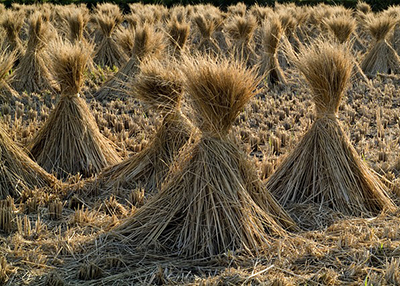Learning economics along with Laura Ingalls Wilder
Reading “Little House in the Big Woods” is a surprisingly fun way to learn about economics.

Many children and adults enjoy reading the “Little House” series of books written by Laura Ingalls Wilder. The first book in the series, “Little House in the Big Woods,” details the pioneer life of a family living isolated from neighbors and how they survived by making most everything they needed. It is entertaining to learn about pioneer life; Michigan State University Extension also recommends it as a fun and easy way to learn about economics!
The Federal Reserve Bank of St. Louis has a lesson plan to use in conjunction with reading this book in order to facilitate understanding of basic economic principles. This lesson could be utilized by schools, particularly fourth through sixth grades, homeschools or even parents as they read the book with their children. It is one of the many resources available on their website. The lesson has been benchmarked to the National Content Standards in Economics, and is written in such a way as to make it easy to teach. Teachers or parents could use this lesson if they are reading the book out loud or if the students are reading it on their own.
The basic concepts covered in the lesson include understanding the terms outputs, inputs, productive resources, intermediate goods and production function. Using the example of when Ma makes cheese, students think about the inputs involved, such as milk, rennet, pans and Ma’s labor, in order to produce the output, the cheese wheel. They also learn the difference between various categories of inputs: natural resources such as water, salt and carrots, human resources such as the physical and mental work done by the characters in the story, and capital resources such as goods that have been produced in order to help make other things, like a stove or a tractor.
 The example of harvesting wheat is used to delve deeper into these concepts. In the book, Pa and Uncle Henry work together with their neighbors to cut, gather and bundle wheat before using machines to separate the grain. Students look at the human resources needed for this task, as well as identifying the multiple responsibilities that are a part of the bigger job. A summary discussion could compare the production function, or the combination of inputs to produce the output, in this scenario versus the production function of a modern farmer using more advanced machinery. Students learn that productive resources are limited, therefore sometimes choices must be made about how to best utilize the resources and that advances in technology can help increase production with limited inputs.
The example of harvesting wheat is used to delve deeper into these concepts. In the book, Pa and Uncle Henry work together with their neighbors to cut, gather and bundle wheat before using machines to separate the grain. Students look at the human resources needed for this task, as well as identifying the multiple responsibilities that are a part of the bigger job. A summary discussion could compare the production function, or the combination of inputs to produce the output, in this scenario versus the production function of a modern farmer using more advanced machinery. Students learn that productive resources are limited, therefore sometimes choices must be made about how to best utilize the resources and that advances in technology can help increase production with limited inputs.
Using stories to learn economic concepts can be more interesting than a lecture format. Youth can be learning about life in a different time and place, increasing their vocabulary and reading comprehension and increasing their economic understanding all while thinking they are just reading a book. Michigan 4-H has many other resources for making learning fun and hands on, including a National 4-H curriculum called Reading Makes Cents, which uses children’s books to teach financial literacy. Also, see news articles about youth money management and entrepreneurship, as well as resources available on the website. Visit the Michigan 4-H website for more information.



 Print
Print Email
Email





